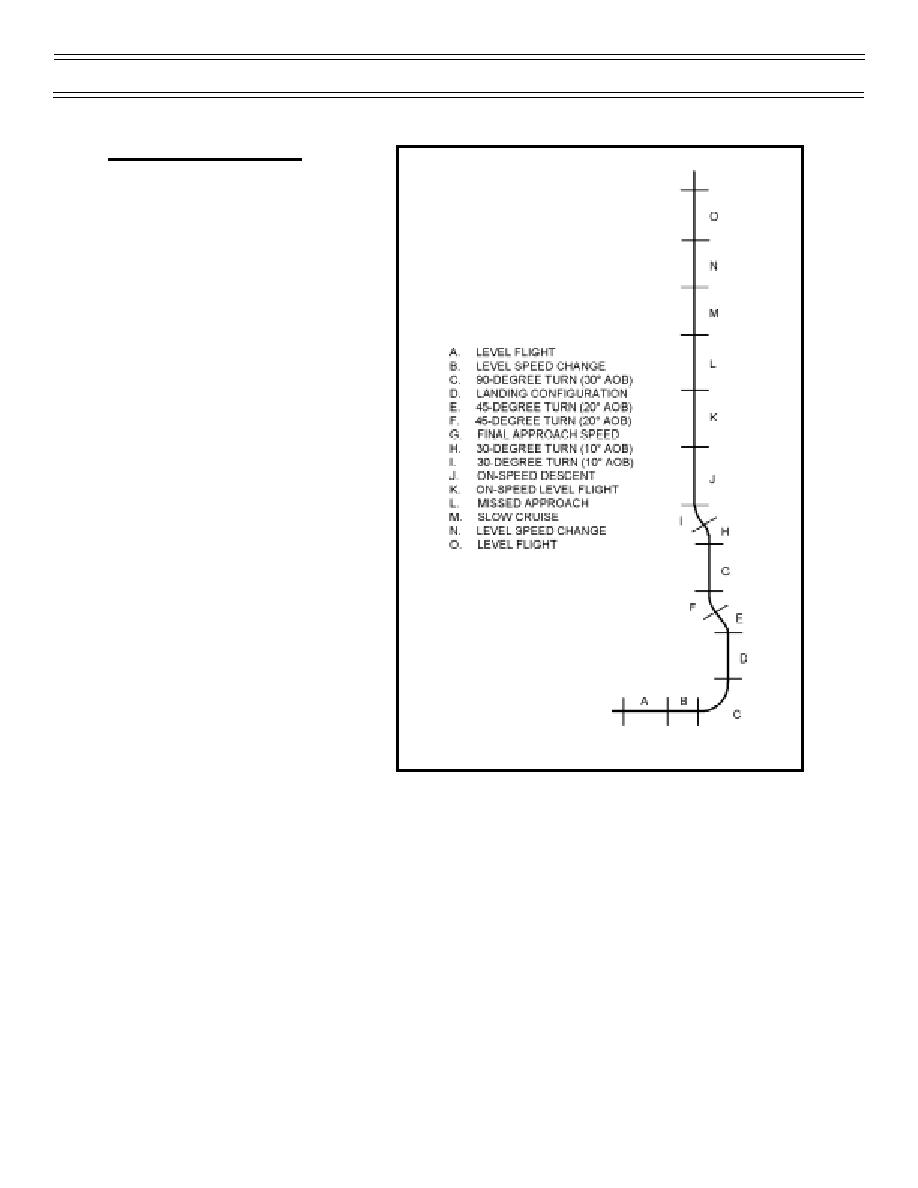
Basic Instrument Maneuvers
Instrument Flight
SLOW FLIGHT MANEUVER
The slow flight maneuver allows you to
practice instrument landing procedures,
at altitude, prior to your first actual
instrument approach. Although this
maneuver may appear complex, it is
actually just a compilation of individual
maneuvers that you have already
performed (Figure 4).
Begin the maneuver from level flight at
250 KIAS. Decelerate to 200 KIAS by
performing a level speed change using
the speed brakes. When you change
the power setting and extend the speed
brakes, you’ll have to trim the nose up to
maintain level flight. Retract the speed
brakes 5 KIAS before you reach 200
KIAS and retrim the nose to maintain
level flight. You should expect a change
in pitch when you extend or retract the
speed brakes.
Next, roll into a 30-degree AOB turn and
hold it for 90 degrees of heading
change, adjusting pitch and power as
needed to maintain altitude and
airspeed. Lead the roll-out by about
one-third of your bank angle, readjusting
pitch and power to maintain level flight.
After completing the turn, lower the gear,
and set full flaps/slats. Adjust pitch to
maintain level flight throughout the
Figure 4: SLOW FLIGHT MANEUVER
transition. At 155 KIAS, advance power
to maintain 150 KIAS and retrim the
nose. Complete the landing checklist at this time.
Once you are stabilized at 150 KIAS, initiate a 20-degree AOB turn for 45 degrees of heading change, first
in one direction and then back to the original heading. When rolling into the turns, adjust pitch and power
as necessary to maintain airspeed and altitude.
At the finish of these turns, adjust nose attitude and power to maintain level flight at optimum AOA.
Perform a 10-degree AOB turn for 30 degrees of heading change and then make a 10-degree AOB turn
back to the original heading.
Extend the speed brakes and establish and maintain a 500-fpm descent for 1,000 ft. Using 10 percent of
your VSI as a lead point, adjust pitch and power for level flight at optimum AOA.
Page 29
(12-00) Original



 Previous Page
Previous Page
